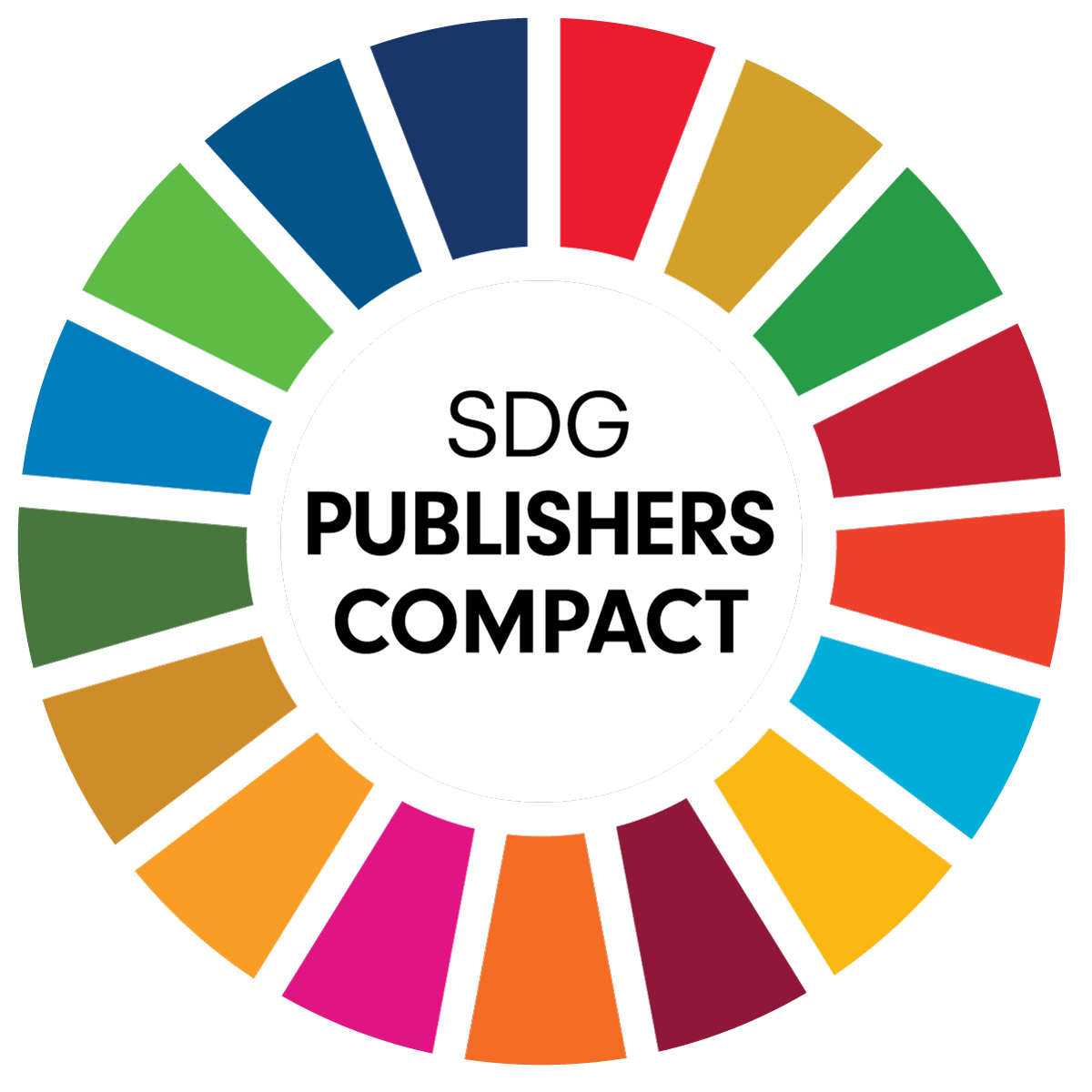Political Stability, Trade Openness, and Institutional Factors Affecting Foreign Direct Investment in India
This study investigates the impact of political stability, trade openness, corruption, business freedom, market size, inflation, and industrialization on foreign direct investment (FDI) inflows to India from 1999–2000 to 2019–2020. Annual time-series data sourced from the World Bank, UNCTAD, and the Heritage Foundation are analysed using ordinary least squares (OLS) estimation and Granger causality tests. The results show that corruption has a significant negative effect on FDI, whereas market size exerts a significant positive influence. Industrialization, business freedom, and trade openness exhibit positive but statistically insignificant effects. Political stability and inflation also show no significant impact. Granger causality analysis reveals unidirectional causality from business freedom, trade openness, and political stability to FDI, and bidirectional causality between market size and FDI. These findings suggest that strengthening governance, expanding market opportunities, and enhancing institutional quality are crucial for attracting sustainable FDI inflows into India.
© The Author(s) 2025. Published by RITHA Publishing. This article is distributed under the terms of the license CC-BY 4.0., which permits any further distribution in any medium, provided the original work is properly cited maintaining attribution to the author(s) and the title of the work, journal citation and URL DOI.
Article’s history: Received 4th of August, 2025; Revised 27th of August, 2025; Accepted 29th of August, 2025; Available online: 1st of September, 2025. Published as article in Volume I, Issue 1(1), 2025
Sarbapriya, R. (2025). Political Stability, Trade Openness, and Institutional Factors Affecting Foreign Direct Investment in India. Applied Journal of Economics, Law and Governance, Volume I, Issue 1(1), 67-87. https://doi.org/10.57017/ajelg.v1.i1(1).04
Acknowledgments: The author is thankful to anonymous referees for valuable comments and helpful suggestions in the earlier draft of the article. After careful revisions, if any error is found in the article, the responsibility solely lies on author himself.
Funding: There is no funding agency of this research as the author receives no grant from any institutions.
Conflict of Interest Statement: The author declares that the research was conducted in the absence of any commercial or financial relationships that could be construed as a potential conflict of interest.
Data Availability Statement: Data available on request: The data presented in this study are available on request from the corresponding author.
Adhikary, B. (2017). Factors influencing foreign direct investment in South Asian economies. South Asian Journal of Business Studies, 6(1), 8–37. https://doi.org/10.1108/SAJBS-10-2015-0070
Ang, J. B. (2008). Determinants of foreign direct investment in Malaysia. Journal of Policy Modeling, 30(1), 185–189. https://doi.org/10.1016/j.jpolmod.2007.06.014
Abubakar, S. (2020). Institutional quality and economic growth: Evidence from Nigeria. African Journal of Economic Review, 8(1), 48-64. https://doi.org/10.22004/ag.econ.301050
Acemoglu, D., Johnson, S., & Robinson, J. A. (2002). Reversal of fortune: Geography and institutions in the making of the modern world income distribution. The Quarterly Journal of Economics, 117(4), 1231–1294. https://doi.org/10.1162/003355302320935025
Ali, S., & Guo, W. (2005). Determinants of FDI in China. Journal of Global Business and Technology, 1(2), 21–33. https://gbata.org/wp-content/uploads/2013/02/JGBAT_Vol1-2-p3.pdf
Asiedu, E. (2002). On the determinants of foreign direct investment to developing countries: Is Africa different? World Development, 30(1), 107–119. https://doi.org/10.1016/S0305-750X(01)00100-0
Balassa, B. (1966). American Direct Investments in the Common Market. Banca Nazionale del Lavoro Quarterly Review, 77, 121–146. https://doi.org/10.13133/2037-3643/11644
Brada, J. C., Drabek. Z., Iwasaki, I. (2021). Does investor protection increase foreign direct investment? A meta‐analysis. Journal of Economic Surveys, 35(1), 34-70. https://doi.org/10.1111/joes.12392
Boga, S. (2019). Determinants of Foreign Direct Investment: A Panel Data Analysis for Sub-Saharan African Countries. EMAJ Emerging Markets Journal, 9(1), 80-87. https://doi.org/10.5195/emaj.2019.175
Cheng, L., & Kwan, Y. (2000). What are the determinants of the location of foreign direct investment? The Chinese experience. Journal of International Economics, 51(2), 379–400.https://doi.org/10.1016/S0022-1996(99)00032-X
Culem, C. G. (1988). The Locational Determinants of Direct Investments Among Industrialized Countries. European Economic Review, 32, 885–904. https://doi.org/10.1016/0014-2921(88)90051-7
Cambazoglu, B., & Simay Karaalp, H. (2014). Does foreign direct investment affect economic growth? The case of Turkey. International Journal of Social Economics, 41(6), 434–449. https://doi.org/ 10.1108/IJSE-02-2012-0173
Caves, R. E. (1971). International corporations: The industrial economics of foreign investment. Economica, 38(149), 1–27. https://doi.org/10.2307/ 2551748
Chakrabarti, A. (2001). The Determinants of Foreign Direct Investment: Sensitivity Analyses of Cross-Country Regressions. Kyklos, 54(1), 89-114. https://doi.org/10.1111/1467-6435.00142
Dunning, J. H. (1980). Toward an eclectic theory of international production: Some empirical tests. Journal of International Business Studies. 11(1), 9–31. https://doi.org/10.1057/palgrave.jibs.8490593
Fan, J. P., Morck, R., Xu, L. C., & Yeung, B. (2009). Institutions and foreign direct investment: China versus the rest of the world. World Development, 37(4), 852–865. https://doi.org/10.1016/j.worlddev. 2008.07.016
Granger, C. W. J. (1969). Investigating causal relations by econometric models and cross spectral methods. Econometrica, 37(3), 424–438. https://doi.org/10.2307/1912791
Granger, C. W. J. (1986). Developments in the Study of Cointegrated Economic Variables. Oxford Bulletin of Economics and Statistics, 48(3), 213 – 228. https://doi.org/10.1111/j.1468-0084.1986.mp48003002.x
Gaikward,P.S (2013). The Impact of Foreign Direct Investment (FDI) on Gross Domestic Production (GDP) in Indian Economy. Information Management and Business Review, 5(8), 411-416. https://doi.org/10.22610/imbr.v5i8.1069
Hornberger, K., Battat, J., & Kusek, P. (2011). Attractive FDI: How Much Does Investment Climate Matter? World Bank. https://doi.org/10.1016/S0304-4076(03)00092-7
Lee, H. H., Hayakawa, K., &Park, C. Y. (2022). The Effect of COVID-19 on Foreign Direct Investment. Global Economic Review, 52(1), 1–17. https://doi.org/10.1080/1226508X.2023.2171459
Jordaan, J. C. (2004). Foreign Direct Investment and Neighbouring Influences. Unpublished doctoral thesis, University of Pretoria. https://repository.up.ac.za/handle/2263/24008
Khamphengvong, V., Xia, E., & Srithilat, K. (2018). Inflow determinants of foreign direct investment. Human Systems Management, 37(1), 57–66. https://doi.org/10.3233/HSM-17229
Lall, P., Norman, D., & Featherstone, A. (2003). Determinants of US direct foreign investment in the Caribbean. Applied Economics, 35(13), 1485–1496. https://doi.org/ 10.1080/0003684032000100382
Liu, X., Wang, C., & Wei, Y. (2001). Causal links between foreign direct investment and trade in China. China Economic Review, 12(2–3), 190–202. https://doi.org/ 10.1016/S1043-951X(01)00050-5
Masharu, U., & Nasir, M. A. (2018). Policy of foreign direct investment liberalisation in India: Implications for retail sector. International Review of Economics, 65(4), 465–487. https://doi.org/10.1007/s12232-018-0306-y
Mah, J. S., & Yoon, S. (2010). Determinants of FDI Flows into Indonesia and Singapore. International Area Review, 13(1), 63–73. https://doi.org/10.1177/223386591001300104
Naudé W. A., & Krugell W. F. (2007). Investigating geography and institutions as determinants of foreign direct investment in Africa using panel data. Applied Economics, 39(10), 1223–1233. https://doi.org/10.1080/00036840600567686
Ochi, A. Haouas, A., & Saidi, A. (2023). Foreign direct investment and economic growth in Arab countries: do institutions, financial development and human capital matter? Unpublished Dissertation. https://doi.org/10.21203/rs.3.rs-4697114/v1
Panigrahi, T. R., & Panda, B. D. (2012). Factors influencing FDI inflow to India, China and Malaysia: An empirical analysis. Asia-Pacific Journal of Management Research and Innovation, 8(2), 89–100. https://doi.org/10.1177/2319510X1200800202
Ramirez, M. (2006). Economic and institutional determinants of foreign direct investment in Chile: A time-series analysis, 1960 - 2001. Contemporary Economic Policy, 24(3), 459–471. https://doi.org/10.1093/cep/byj027
Root, F. R., & Ahmed, A. A. (1978). The influence of policy instruments on manufacturing direct foreign investment in developing countries. Journal of International Business Studies, 9(3), 81–94. https://doi.org/10.1057/palgrave.jibs.8490670
Ravinthirakumaran, K., Selvanathan, E. A., Selvanathan, S., & Singh, T. (2015). Determinants of foreign direct investment in SriLanka. South Asia Economic Journal, 16(2), 233–256. https://doi.org/10.1177/1391561415598458
Szkorupová, Z. (2014). A Causal Relationship between Foreign Direct Investment, Economic Growth and Export for Slovakia. Procedia Economics and Finance, 15, 123-128. https://doi.org/10.1016/S2212-5671(14)00458-4
Scaperlanda, A. E., & Mauer, L. J. (1969). The Determinants of US Direct Investment in the EEC. American Economic Review, 59, 558-568. https://doi.org/10.1016/0014-2921(83)90098-3
Sims, C. A. (1972). Money, Income and Causality. American Economic Review, 4, 540–542. https://www.jstor.org/stable/1806097
Hashmi, S. H., Hongzhong, F., Ullah, A. (2020). Effect of political regime, trade liberalization and domestic investment on FDI inflows in Pakistan: new evidence using ARDL bounds testing procedure. International Journal of Information, Business and Management, 12(1), 276-99. https://doi.org/10.5539/ASS.V9N9P270
Saidi, Y., & Ochi, A. (2023). Estimating relationships among foreign direct investment, governance quality, and economic growth in developing countries using the threshold auto‐regressive model. Regional Science Policy and Practice, 15, 403-424. https://doi.org/10.1111/rsp3.12654
Sihombing, P. R., Arsani, A. M., Islam, I. H. N., Octaviana, A., & Maisaroh, M. (2023). Implementation of the Panel Model on Investment Determinants in Indonesia in 2018-2022. Jurnal Perspektif, 21(2), 158- 163. https://doi.org/10.31294/jp.v21i2.16495
Sethi, D., Guisinger, S. E., Phelan, S. E., & Berg, D. M. (2003). Trends in foreign direct investment flows: A theoretical and empirical analysis. Journal of International Business Studies, 34(4), 315–326. https://doi.org/10.1057/palgrave.jibs.8400034
Singhania, M., & Gupta, A. (2011). Determinants of foreign direct investment in India. Journal of International Trade Law and Policy, 10(1), 64–82. https://doi.org/10.1108/14770021111116142
Williamson, C. R., & Kerekes, C. B. (2011). Securing private property: Formal versus informal institutions. The Journal of Law and Economics, 54(3), 537–572. https://doi.org/10.1086/658493
Zheng, P. (2009). A comparison of FDI determinants in China and India. Thunderbird International Business Review, 51(3), 263–279. https://doi.org/10.1002/tie.20264




